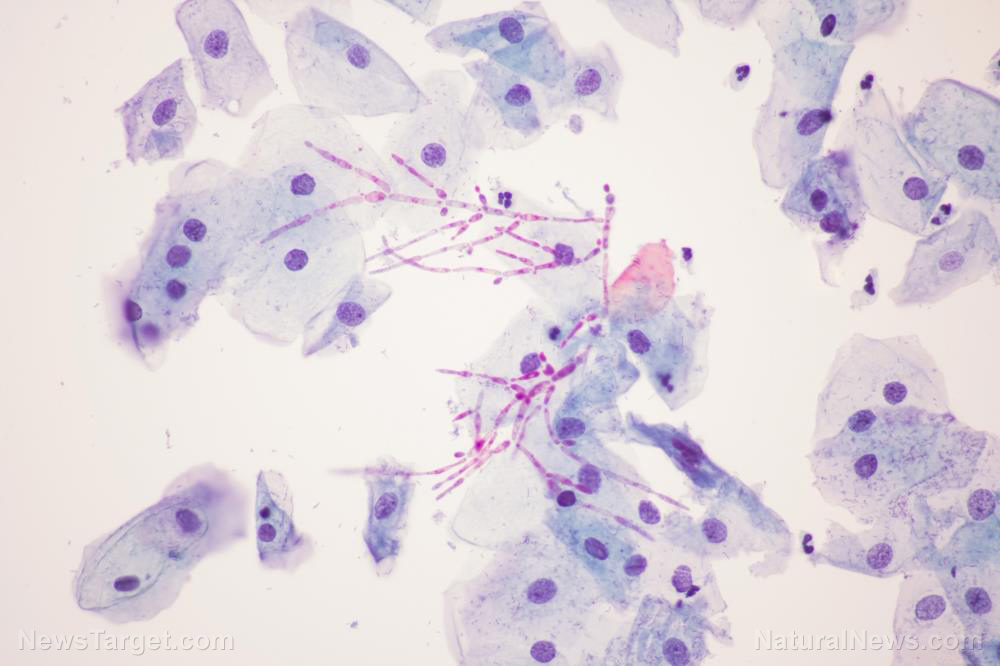“Beet” it! A compound found in this superfood may help slow Alzheimer’s
04/18/2018 / By Michelle Simmons

You can now add one more benefit to eating beets – that is, slowing down the progress of Alzheimer’s disease. According to a study, the extracts of beets contain a compound called betanin which could help prevent the building up of misfolded proteins and slow the progression of Alzheimer’s disease.
Past studies conducted by other researchers suggested that beetroot juice can enhance the flow of oxygen to the aging brain and potentially boost cognitive performance. Based on this work, a team of researchers at the University of South Florida aimed to determine if betanin could inhibit the effects of copper on beta-amyloid and eventually prevent the misfolding of these peptides and the oxidation of neurons. Betanin is a beet compound used in commercial dyes that easily binds to metals.
“Copper exposure is far more common than most people suspect,” explained Mike Adams, the Health Ranger, publisher of Medicine.news and founder of CWC Labs, an ISO-accredited mass-spec food composition analysis laboratory. “Alarmingly, many multivitamins contain surprisingly high amounts of copper that, if taken daily, can combine with other sources of copper exposure to result in long-term toxicity in consumers,” Adams warned. “In the same way that municipal water pipes in Flint, Michigan exposed residents to toxic lead, the copper pipes commonly found in modern homes also release elemental copper into tap water.”
If this new research is to be believed, phytochemicals found in beets might help protect the brain from copper toxicity.
A closer look at what really causes Alzheimer’s
Researchers all around the world continue to identify what causes Alzheimer’s disease. Nonetheless, they suspected that beta-amyloid, a sticky protein fragment, or peptide, builds up in the brain. This, in turn, causes an interruption in the communication between brain cells called neurons. (Related: Daily dose of beet juice promotes brain health in older adults.)
Li-June Ming, one of the researchers of the current study, explained that when beta-amyloid links itself to metals, most of the damage occurs. Metals, such as iron and copper, can cause beta-amyloid peptides to misfold and attach together, forming clumps that can induce inflammation and oxidation in nearby neurons. As a result, neurons die.
The research team conducted multiple experiments that involved 3,5 di-tert-butyl catechol, or DTBC, a compound that is used as a model substance for monitoring the chemistry of oxidation. They measured the oxidative reaction of DTBC when exposed to beta-amyloid alone, beta-amyloid bound to copper, and beta-amyloid bound to copper in a betanin mixture. Visible spectrophotometry was used to measure these.
The researchers found that beta-amyloid alone caused little or no oxidation of DTBC. However, beta-amyloid bound to copper lead to substantial DTBC oxidation. The copper-bound beta-amyloid in betanin mixture reduced oxidation by as much as 90 percent. This indicated that misfolding of the peptides was potentially inhibited. Based on the findings of the study, betanin can potentially inhibit certain chemical reactions in the brain that contribute to the development of Alzheimer’s disease.
The researchers explained that although betanin did not stop the misfolding completely, it still reduced oxidation. Subsequently, less oxidation could stop some portion of misfolding activity.
“Less oxidation could prevent misfolding to a certain degree, perhaps even to the point that it slows the aggregation of beta-amyloid peptides, which is believed to be the ultimate cause of Alzheimer’s,” explained Darrell Cerrato, one of the researchers of the study.
The researchers hope that their findings could lead to the development of treatments that could relieve some of the long-term effects of Alzheimer’s disease, the leading cause of dementia globally. According to the National Institute on Aging, more than five million people in the U.S. suffer from Alzheimer’s disease. Its occurrence increases with age, affecting one in 10 Americans aged 65 and above, and one in three by age 85.
The study was presented at the 255th National Meeting & Exposition of the American Chemical Society (ACS).
Ways to prevent Alzheimer’s disease
Alzheimer’s disease is characterized by the accumulation of tangles (tau) and plaques (amyloid-beta) – two types of protein in the brain. It is an irreversible, progressive brain disorder that gradually destroys memory and thinking skills, and eventually the ability to carry out daily tasks. Therefore, it is important to take measures that can help prevent the disease. One of the ways that can help prevent it is making healthy lifestyle changes, such as exercising regularly, following a Mediterranean diet, and getting enough and quality sleep.
Read more news stories and studies on Alzheimer’s disease by going to Alzheimers.news.
Sources include:
Tagged Under:



















